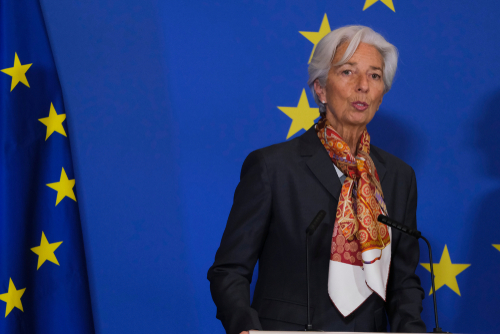
Europe | Monetary Policy & Inflation

Europe | Monetary Policy & Inflation
This article is only available to Macro Hive subscribers. Sign-up to receive world-class macro analysis with a daily curated newsletter, podcast, original content from award-winning researchers, cross market strategy, equity insights, trade ideas, crypto flow frameworks, academic paper summaries, explanation and analysis of market-moving events, community investor chat room, and more.
The ECB is in a bind. The economy is deteriorating, Europe’s energy supply is unclear, and political uncertainty has reached Italy again. The Governing Council want to tighten, but their panic at the widening seen in BTP/Bund back in June suggests their appetite to break things (economic growth / cheap periphery funding) to do so is limited.
The ECB need to deliver a tangible tool for capping spread widening (their so-called transmission protection mechanism, TPM). However, the ECB’s capacity to do so is limited by the lack of unity in the governing council. Buba’s Joachim Nagel wants strong conditionality on any intervention to do so. The justification of what a ‘reasonable’ widening is remains to be seen, while the broader argument that the tool will be used to fight against ‘unreasonable’ widening loses potency when there is tangible Italian political uncertainty around the corner. Under Lagarde, the ECB has a track record of underdelivering (at least at first), and there’s little reason to expect much else this time. Dogmatic disagreements in the governing council will likely continue until the dangers of not doing anything outweigh the political costs of one side conceding. We do not expect this level has been reached yet.

At the very least, by the time Lagarde comes to make her statement, the outlook for Italian elections, and gas supply will be known. Assuming that neither issue escalates she will have the ammo to re-affirm her commitment to the previously laid out path, with potentially a hawkish lean for future use of 50bp steps. That, in turn, should see more priced into the hiking cycle beyond December than currently (Charts 3 & 4).

We no longer think the pricing for ECB hiking looks overly hawkish. This being said, it is worth caveating that should the gas supply stoppage extend beyond the current deadline of Thursday (the day gas should resume), the outlook for hikes (and the economy in general) will nose-dive.
Russia has tended to pursue its foreign policy with a degree of ‘plausible deniability’ (it has somewhat stretched the definition of ‘plausible’ in the past). I would expect that they would do similarly if they wished to make their gas customers in Western Europe sweat a little more. The resumption of gas could be delayed by ‘new maintenance issues’ or perhaps a discovery of unexploded WW2 ordinance somewhere important…
Even in such a risk-off situation, we would expect the ECB to continue with the initial hike, with the capacity to reverse the move if the stoppage is extended significantly further.
The hawks have not let up on their wish to move in larger steps. But that push has apparently come along side a concession on the size of the initial step (as per arch-hawk Robert Holzmann’s comments). Given the current risk outlook, we think there’s little probability of a 50bp rise just yet, but a stronger chance of its use in the future.
Since the ECB’s last meeting in June, inflation has continued to track higher, led by energy making the new, updated June forecasts look already rather redundant (Charts 1 & 2). Meanwhile, although survey data has continued to deteriorate, so far this has not fed into official data (Charts 5 & 6).

Looking out into September’s meeting, the outlook for the medium term will be critical. That is when the ECB may move by 50bp if the forecast continues to overshoot. While near-term energy inflation should be less of an issue for the medium-term outlook, as Schnabel set out early in the year, the divestment from Russian gas and the move into greener energy sources will raise the baseline cost of energy into the longer-term.

In sum, there is a strong case for a continued ECB hawkish lean. Alongside this, while the initial release of information on the plan to cap bond spreads may underwhelm, the ultimate direction of travel is towards net bond purchases. On this basis, as compared to the likes of the BoE, there should be value in positioning for relative EGB flattening (Chart 8).
Spring sale - Prime Membership only £3 for 3 months! Get trade ideas and macro insights now
Your subscription has been successfully canceled.
Discount Applied - Your subscription has now updated with Coupon and from next payment Discount will be applied.